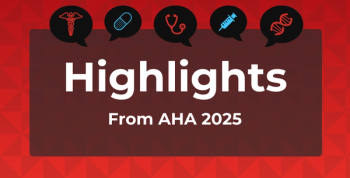
CDC Report Looks at Nonadherence to HIV Medications Due to Cost
The report suggests that removing barriers to coverage, as well as reducing medication costs for people with private insurance, would help decrease cost-related nonadherence to HIV therapies.
Nonadherence to prescribed medication among HIV patients may be associated with unmet need for the Ryan White AIDS Drug Assistance Program (ADAP), not having Medicaid, having private insurance, lower HIV medical care engagement, and lower viral suppression, according to the CDC’s recent
The report included data from the CDC’s Medical Monitoring Project, which analyzed cross-sectional, nationally representative, medical care, and clinical outcomes of adults with HIV. According to this data, during 2016-2017, 14% of people with HIV used a prescription drug cost-saving strategy for any prescribed medication and 7% had cost saving-related nonadherence.
“Nonadherence due to prescription drug costs was associated with reporting an unmet need for medications from the Ryan White AIDS Drug Assistance Program (ADAP), not having Medicaid coverage, and having private insurance. Persons who were nonadherent because of cost concerns were more likely to have visited an emergency department, have been hospitalized, and not be virally suppressed,” noted the authors. “Reducing barriers to ADAP and Medicaid coverage, in addition to reducing medication costs for persons with private insurance, might help to decrease nonadherence due to cost concerns and, thus contribute to improved viral suppression rates and other health outcomes among persons with HIV infection.”
The Medical Monitoring Project collected data through face-to-face or telephone interviews and medical record abstraction of those with HIV infection during June 2016 to May 2017. Among the adults with HIV who used cost-saving strategies and reported cost-saving nonadherence: 4% took less medicine, 6% delayed a prescription, 9% asked a doctor for a lower-cost medicine, 1% bought drugs from another country, and 2% used alternative medicine.
Based on the data, cost-saving nonadherence was not related to age, race/ethnicity, gender, homelessness, or time since HIV diagnosis. Instead, the data suggested that nonadherence was associated with household income as well as disability.
“Among those with health insurance, cost saving—related nonadherence was more likely among persons with private insurance (8%) than among those who did not have private insurance (6%) and was less likely among those with Medicaid (5%) than among those who did not have Medicaid (8%),” the report said. “Persons who had an unmet need for medications from ADAP were approximately five times as likely to be nonadherent because of cost (32%) than were those who received ADAP.”
The report suggests that removing barriers to ADAP and Medicaid coverage, as well as reducing medication costs for people with private insurance, would help decrease cost-related nonadherence. In turn, this could help improve health outcomes for persons living with HIV infection and reduce HIV transmission.
Newsletter
Stay ahead of policy, cost, and value—subscribe to AJMC for expert insights at the intersection of clinical care and health economics.









































